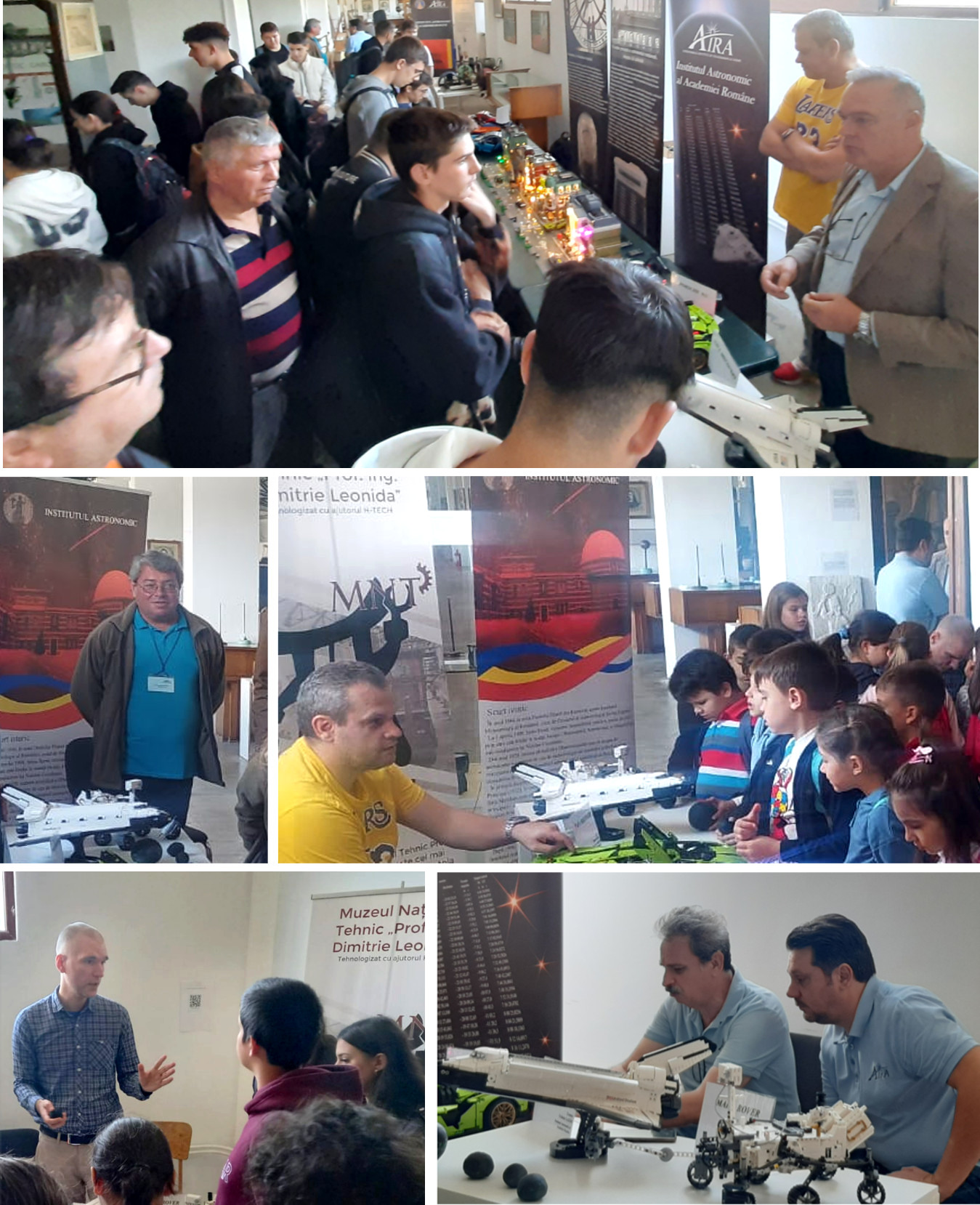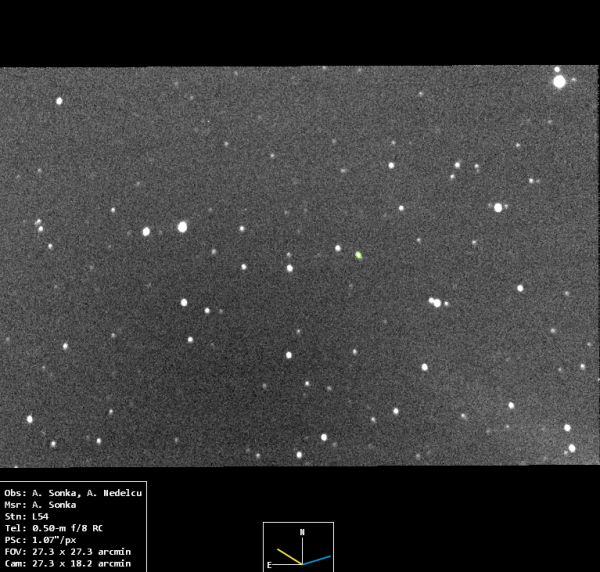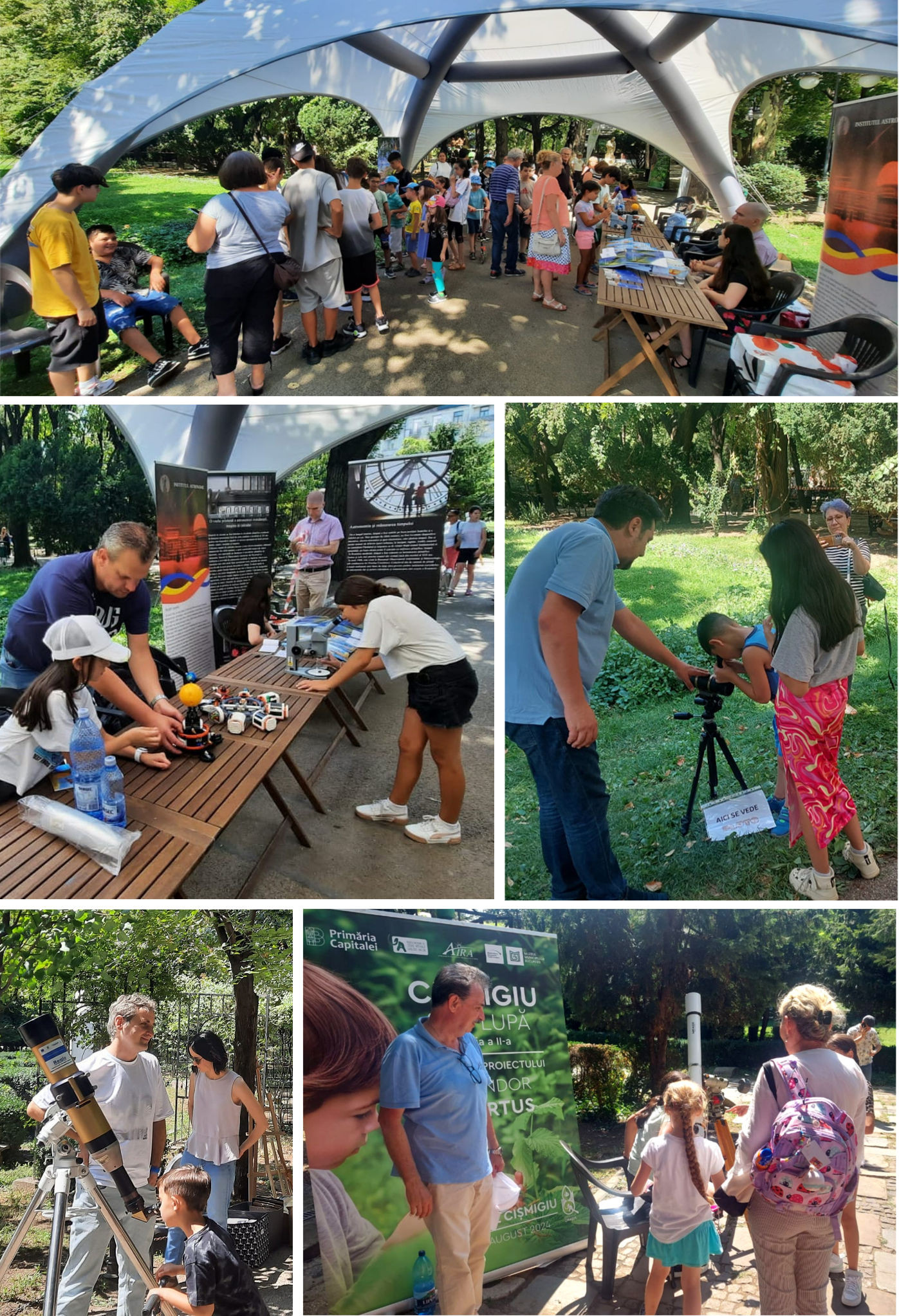Despre reducerea dezastrelor naturale, la Muzeul Tehnic
Institutul Astronomic al Academiei Române, în parteneriat Primăria Municipiului București, Direcția de Mediu - Serviciul Ecologie Urbană, a participat în data de 15 octombrie 2024 în incinta Muzeului Național Tehnic „Dimitrie Leonida", la proiectul „CLADES NON TIMEO" prilejuit de „Ziua Mondială pentru Reducerea Dezastrelor Naturale".
Cu ocazia acestei participări, Institutul Astronomic a activat mai multe componente educaționale. Astfel, fundalul standului Institutului a fost reprezentat vizual și informațional de mai multe roll-upuri tematice color. Acestea au fost integrate în prezentarea corpurilor cerești ce pot avea un anumit grad de periculozitate pentru Terra, prin probabilitatea evaluată matematic pentru multe dintre ele, de a lovi planeta noastră. De la standul Institutului nu a lipsit nici de această dată o amplă zonă de modelare-machetare reprezentată de printuri 3D la scară redusă, ale unor asteroizi și planete pitice din Sistemul Solar, dar și de machetele unor vehicule cosmice, asemănătoare celor care asolizează pe asteroizi. Alături de modelele 3D, fragmente reale de meteorit vechi de miliarde de ani, ce au fost descoperite în Africa, au putut fi studiate de participanții la eveniment.
Transferul tehnologic de la industria aero-spațială la aparatele și produsele uzuale ale vieții noastre cotidiene a fost de asemenea inclus în discuții, prin prezentarea altor machete, iar problematizarea dinamicii din aceste domenii a fost explicată vizitatorilor prin exemple concrete, în special publicului de vârstă școlară.
Spectaculoasa machetă a telescopului spațial Hubble a reprezentat un punct focal de atracție a privirilor la standul Institutului Astronomic.
O multitudine de luminițe colorate ale modelelor noastre, exclamații de uimire, nenumărate întrebări și multe chipuri zâmbitoare, au caracterizat desfășurarea acestui eveniment.


Monitorizarea din România a lansării misiunii spațiale Hera
Sonda spațială Hera, dezvoltată de Agenția Spațială Europeană, a fost lansată de la Cape Canveral pe 7 octombrie 2024, ora 17:52 (ora României). Misunea are ca scop studierea asteroidului (65803)Didymos și a satelitului său Dimorphos, care a fost lovit intenționat cu un proiectil pe 22 septembrie 2022. Hera va studia urmările acestui impact, pentru a se înțelege mai bine cum poate devia omenirea un asteroid periculos pentru civilizația umană.
La numai 8 ore după lansare, de la Institutul Astronomic al Academiei Române, Observatorul din Berthelot, a fost observat etajul de rachetă Falcon 9 care a lansat sonda spațială, pe când se afla la 145.000 km de Pământ. Obiectul se mișcă repede și variază în strălucire pentru că se rotește necontrolat. Sonda spațială Hera se află și ea în imagini dar este prea mică și nu a fost detectată cu telescopul nostru.
Autumn Equinox 2024
Momentul echinocțiului de toamnă în emisfera nordică este acela al momentului de timp la care longitudinea geocentrică aparentă a centrului Soarelui este egală cu 180 de grade.
Mult mai comun, în mass-media și în societate, momentul echinocțiului de toamnă este asociat cu ziua din luna septembrie în care lungimea zilei și a nopții sunt egale.
În anul 2024, echinocțiul de toamnă se va produce duminică 22 septembrie la ora 12h43min40,82sec Timp Universal Coordonat (UTC), adică la ora 15h43min40,82sec în Timp Legal al României (UTC+3h, deoarece suntem încă la ora de vara).
La acest moment, în 2024, latitudinea geocentrică a centrului Soarelui are valoarea de − 0,56″, iar ascensia dreapta are valoarea de 12h00min. 0,015ssec iar declinația sa este de − 0,52″. După cum se poate constata din valorile latitudinii geocentrice și ale ascensiei drepte, ele sunt apropiate de zero și respectiv 12h. De aceea se mai spune ca Soarele se află în direcție opusă direcției punctului vernal în timpul echinocțiului de toamna. Aceasta ultima afirmație este parțial exactă și poate fi acceptată deoarece diametrul aparent al Soarelui este de ordinul a 30 de minute de arc.
Echinocțiul de toamna pentru tarile din emisfera de nord a Pământului corespunde cu echinocțiul de primăvară din emisfera de sud.
Calendarul utilizat în România este calendarul gregorian. Calendarul gregorian a fost conceput și adoptat în 1582 pentru a se evita deriva datelor pentru schimbarea anotimpurilor. Astfel, conform calendarului gregorian, datele pentru echinocțiul de toamnă vor fi mereu în perioada 21-24 septembrie. Echinocțiul de toamnă se va petrece în majoritatea anilor în 22 sau 23 septembrie. Datele în care acesta se produce în 21 septembrie sau în 24 septembrie sunt mai puțin frecvente. Astfel, în 2092 echinocțiul de toamnă va avea loc la 21 septembrie, pentru prima data la aceasta data de la crearea calendarului gregorian.
În anul 1803 echinocțiul de toamna a avut loc la 24 septembrie, pentru prima data de la crearea calendarului gregorian.


Participarea Institutului Astronomic la evenimentul Splendor Hortus 2024
În data de 8 august 2024, Institutul Astronomic al Academiei Române a participat la evenimentul cultural „Splendor Hortus” organizat în Parcul Cișmigiu de Primăria Municipiului București, prin Direcția de Mediu, Serviciul de Ecologie Urbană. La acest eveniment, echipa IAAR și-a propus popularizarea ofertei culturale a Institutului Astronomic și în general, educația prin știință și astronomie.
Publicul participant a avut astfel ocazia de a privi Soarele prin filtre profesionale montate pe telescoape. Splendoarea observării directe a stelei de lângă noi a impresionat vizitatorii de toate vârstele prezenți la standul IAAR, prilej de a răspunde numeroaselor întrebări ale acestora.
Prin componenta de machetare pe care am integrat-o acestui eveniment - un mini-planetariu cu sistemul de mecanică cerească Soare-Pământ-Lună dar și o stație orbitală, am putut activa metodele învățării prin descoperire și modelare, în demersul nostru de a comunica eficient informația tehnico-științifică, în special către publicul de vârstă școlară.
De această dată, prin puternica lupă binoculară a IAAR publicul a privit un fragment al meteoritului condritic Gao Guenie, ce a fost descoperit în anul 1960 în Africa de Vest (Burkina Faso). Fascinația observării directe a unui corp de origine extraterestră, vechi de miliarde de ani, și tentația irezistibilă a zeci de mânuțe curioase de a-l studia folosind simțul tactil și de „a regla” lupa binoculară, i-a încântat pe profesioniștii de mâine ai laboratoarelor și firmelor României.